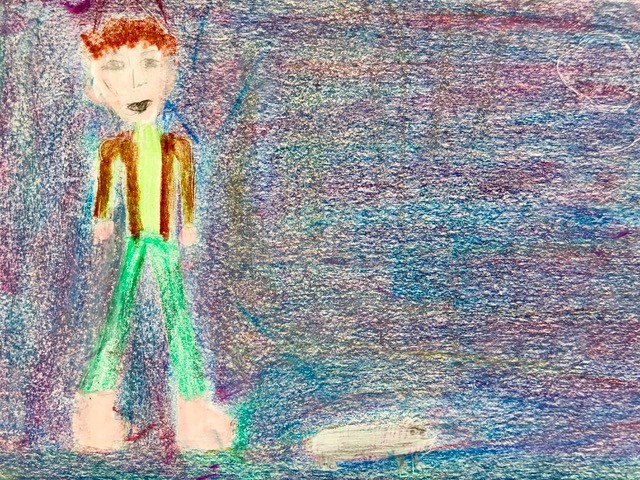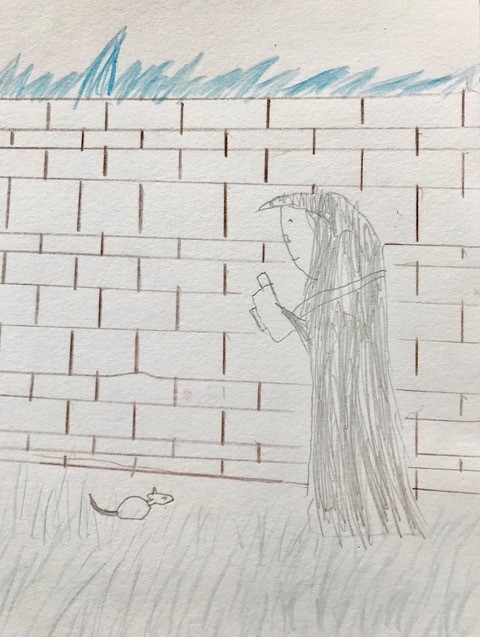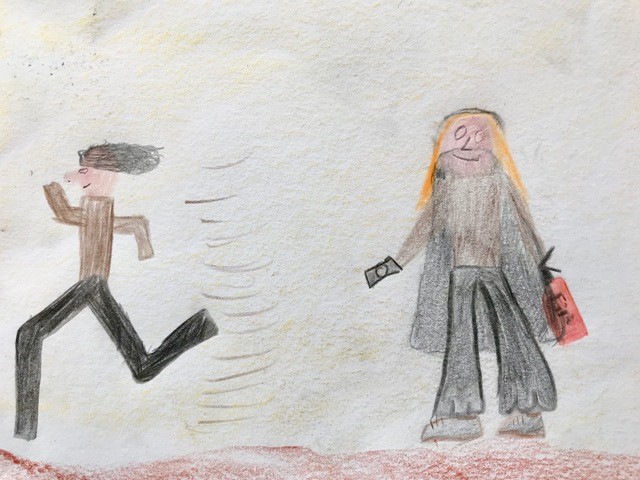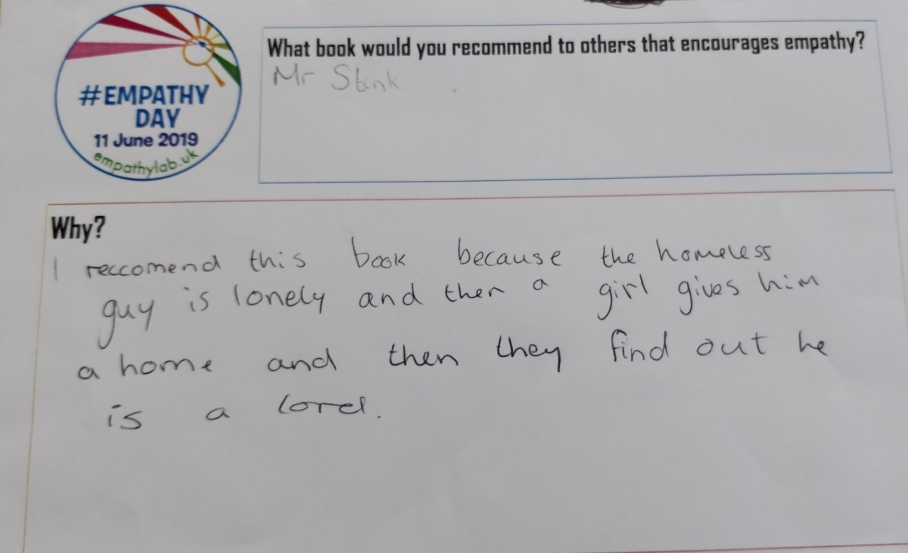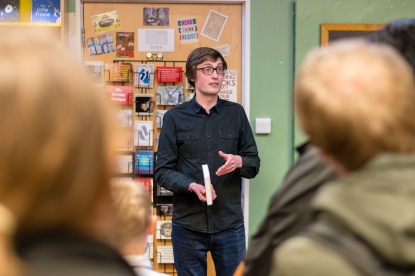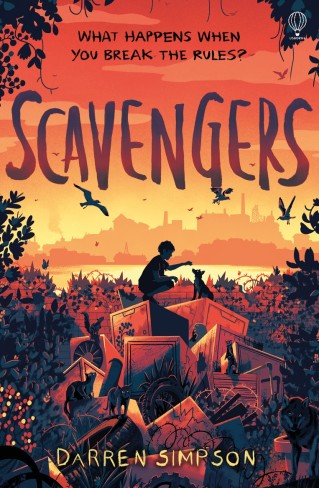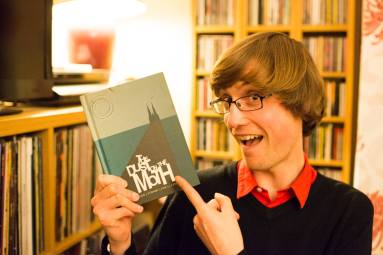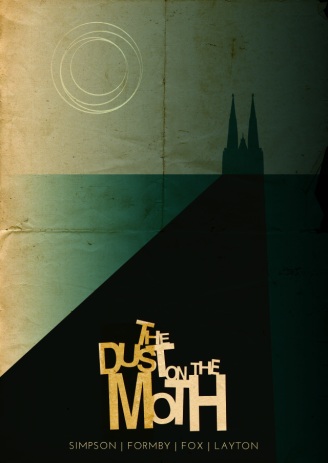Okay, it’s been about a third of a year since I last left Scavengers grubbins here, so I guess I’m due a blog post. Just to warn you, though: life these days is a rickety rollercoaster, so I’ll be surprised if this ends up in any way coherent. Don’t build your hopes up for well-structured reflections on what’s gone on over the last four months; this is more akin to a spurge of word-vomit onto my keyboard.
So where do I start?
Let’s begin with a section I’ll vaguely treat as
Stuff I’ve been up to
There’s been a few school visits. I went to Walton Girls’ High School and to Allington with Sedgebrook Church Of England Primary School – both in Grantham – and also to the Iona School in Nottingham. And more recently I went to the newly sited Almondbury Library in Huddersfield, to meet pupils from Lowerhouses School and Almondbury Community School.
Most of these visits were made to give my Scavengers presentation, but the trip to Iona School was a slight return (see earlier blog post), to test out and polish my Scavengers workshop. Which went down pretty well, I think. Students were laughing and writing, and that’s what we all want, right?

Walton Girls’ High School, Grantham
Now that I’ve just about conquered my fear of standing in front of halls packed with pupils, school visits are a barrel of fun. I’m always hiding my jitters behind a twitchy smile while pupils file in, but the presentation soon begins, and before I know it pupils are chuckling and throwing their hands up to contribute, and the nerves are gone. School visits are weirdly emotionally draining, but that’s because they’re so emotionally involving. A matter of stamina, methinks.
I’ve said it in previous posts, but I’ll say it again: the school children I meet inspire me and fill me with hope. There’s just so much energy in those halls; so much humour, insight, thoughtfulness, inquisitiveness and bravery. I honestly leave schools feeling more optimistic about the future. From what I’ve seen so far, it’s in good hands.
My return to Iona School was particularly amusing. The pupils there are reading Scavengers as their term text, which meant the workshop was interrupted at regular intervals by pupils fishing for clues as to what happens next in the novel. I didn’t cave, though. Kids can puppy-eye all they want, but they’ll get no spoilers from me.
By the way, if you’re a teacher or librarian and you’re interested in booking me for a visit, have a gander at my shiny new Schools and Events page.

Walton Girls’ High School, Grantham
Beyond school visits, I ran an Easter Scavengers event at Nottingham’s Waterstones, and in April also had the pleasure of attending the Federation of Children’s Book Groups’ Conference in Caterham. Usborne kindly gave me their entire two-minute slot at the publishers’ presentation session. This meant I had a strict 120 seconds to waffle about Scavengers to an auditorium full of publishing and FCBG representatives. The pressure was seriously on; over-treading the designated two minutes by even a second would mean falling through a trapdoor into a volcano full of lava-proof sharks.
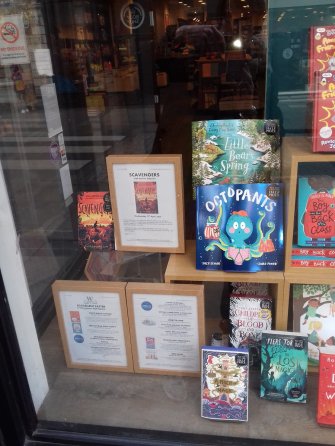
Scavengers event at Nottingham’s Waterstones
Okay, so I made the trapdoor thing up. The lava and sharks too. But the pressure was most certainly still on. And it got to me, a little. I’d been rehearsing my two minutes of guff for two weeks beforehand, and had it down to a tee. But the long wait in the auditorium had my nerves a-jiggling and – after what appeared to be a smooth start – I ground to a halt at some point in the middle of my speech. Witnesses tell me I only faltered for a few moments. To me it felt like I’d been plummeting for several hours into a soundless abyss.
I recovered, though. That’s the main thing. I said all I’d planned to say, and have heard that feedback at the evening dinner was very positive. Mind you, perhaps the wine and Prosecco were in full flow by then.

About to plunge into a volcano at the FCBG 2019 Conference
One of the best things about the conference was hanging out at Usborne’s exhibition stand, because I got to meet Sara Sumner and Samantha Thomas – two people who’ve been championing Scavengers right from the start. They were as lovely as I’d imagined they’d be, and it’s always great to meet the people behind the Twitter profiles.
This is dragging on, so I’m going to wrap this so-called “section” up with bullet points.
So, as well as the above,
- I got to meet Writing East Midlands young writers’ group three times:
- once to attend one of their workshops for an author Q&A;
- again to lead a special Scavengers workshop, which involved dragging these young scribes around Nottingham’s town square to find inspiration in the mundane and everyday – the results ranged from dystopian drama to eco poetry and cosmic farce, and every piece was amazing;
- and once more to check out their showcase on National Writing Day at Nottingham’s central library – again, incredible talent and range, with a lovely celebratory atmosphere, and seeing live poetry in action was quite an eye opener;
- I received a home visit from the lovely Rob and Andy of VIP Reading during their #VIPreadtrip, so that they could film me for some VIP Reading video resources;
- I had the pleasure of sharing an event with the lovely and very funny Kate Mallinder at this year’s Lowdham Book Festival;
- and last but by no means least, I had a surprise Scavengers party thrown at me by my incredible wife, which almost had me spewing with equal measures of joy and mortification.
Okay. Moving on. The next sort-of-section of this mess will cover
The reception of Scavengers
It’s been amazing, really. Overwhelming. Every time you think things have gone quiet and no-one’s reading your book, you receive some mind-bending news or a random tweet by someone saying how much they’ve enjoyed it.
Scavengers has had some very enthusiastic reviews from bloggers (special shout-outs to Lily and the Fae, Book-bound, ReadItDaddy, Chris Soul, NottsLit and Bellis Does Books), and has also received great reviews on the likes of Amazon, goodreads and waterstones.com (if you happen to have enjoyed Scavengers, it’d be massively appreciated if you could toss some stars and words at it in these sorts of places; it all helps with the algorithmic magic). It was also a Book Club Highlight in Reading Zone‘s children’s and librarians’ newsletters.
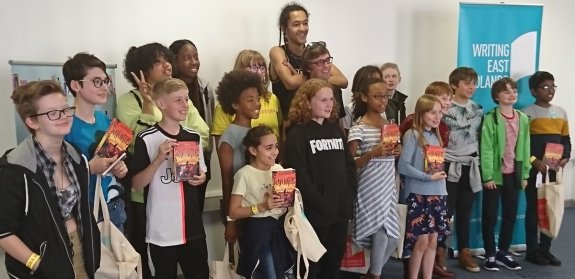
The Writing East Midlands Scavengers workshop
Scavengers has done particularly well on Toppsta. It was selected in April as one of 2019’s Best Debut Novels, and more recently made it into Toppsta’s Most Popular Books of 2019 So Far. This means a huge amount to me, as Toppsta reviews come from children, and for me, children’s thoughts on the book are particularly important. Not only because children are the book’s target readership, but also because children are insightful, discerning, and brutally honest. Reading a glowing review from a younger reader honestly makes me well up, every single time.
Scavengers has also been recommended on radio book clubs a couple of times (hello BBC Radio Berkshire), but here are a couple of seriously big biggies: in April, Scavengers was selected a standout children’s book in the Observer and Guardian, and – as if that wasn’t enough – last month it was selected as one of the Guardian’s Best Books of 2019 So Far! Bonkers. My baby book, barely able to walk, stumbling like a newborn Bambi, hanging out with the likes of Toni Morrison and Angie Thomas. Yikes, yikes and more yikes.
I’m retching now. There’s only so much of this look-at-me-look-at-me I can bear. So, without further ado, let’s move swiftly on to the final section, in which I’ll skim over
What’s to come
I’m looking forward to some more presentations and workshops at schools this month. I’ll be returning to Grantham to visit the Priory Ruskin Academy, and closer to home I’ll be visiting Arnold Hill Academy and Nottingham Free School. The latter two visits have been set up by Nottingham City of Literature’s Young Ambassadors, with whom it’s a real pleasure and privilege to work with.
The Five Leaves Bookshop, which so wonderfully hosted Scavengers‘ launch all those aeons ago, have a book group, and on 31 July they’ll be getting together to discuss and dissect Scavengers. I’ll be popping in for the second half to answer any questions, and will be using a large glass of wine to shield myself from whatever’s thrown at me. If you fancy joining in, come along.
And finally (deep breath), there are two Incredibly Exciting Things on the way, but they’ve not yet been officially announced, so I can’t reveal much. Let’s just say that one relates to what follows Scavengers book-wise, and the other ties in with a scheme that will hopefully see Scavengers doing good for a cause that’s very close to my heart. I can’t wait to tell you all about it. But alas, for now, mum’s the word.
And that’s it! I’m done. If you’ve made it to the end, well done you. Give yourself a biscuit and a pat on the back. You’ve earned it.
Much love
Darren


